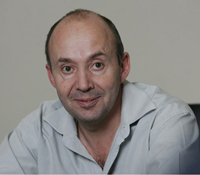Adidas Dominate in Brazil as Sponsors Mix the Messages – Nigel Currie
July 10, 2014
As the tournament approaches its final stages, the battle of the big three kit manufacturers is being dominated by Adidas. Official FIFA Partner Adidas, and Puma are the kit suppliers to 8 of the 32 teams who competed in Brazil, while Nike has agreements with 10 of the teams. Puma had no teams left in the tournament by the quarter final stages and with Nike supported Brazil and the Netherlands going out in the semi finals, the stage is now clear for Adidas who are the suppliers to both finalists, Germany and Argentina.
The other visible brand exposure during matches comes through the pitch side perimeter advertising boards, which is a key communication tool for FIFA’s partners and sponsors. FIFA’s 6 main partners receive solus branding on the LED boards while the 8 sponsors are paired up. The local sponsors all appear together. The signs are changed every 30 seconds during the games giving about 8 showings in total during each half of play – a total of about 8 minutes per match exclusive exposure for the partners and 8 minutes per match of exposure shared with one other brand for the sponsors. This will work out at about 8.5 hours of solus exposure for the 6 partners and 8.5 hours of shared exposure for the 8 sponsors over the entire tournament.
One brand name appears for four of the partners – Visa, Emirates, Sony and Adidas. Powerade, the official sports drink chosen by FIFA gets some of the Coca Cola allocation while Hyundai shares its exposure with Kia which it part owns.
As for the sponsors, Castrol is paired with Budweiser, Continental is paired with Johnson and Johnson, McDonalds with Yingli Solar while two Brazilian companies are paired together, food giant Marfrig and Telecoms company, Oi.
The sponsors have been more adventurous in using different brand names for different matches. Budweiser has allocated space for beer brands it owns all over the world such as; Brahma (Brazil), Jupiler (Belgium), Quilmes (Argentina), Hasseroder (Germany) and Harbias (China). Mafrig has featured the Irish Moy Park brand, and Johnson & Johnson has given prominence to Listerine, Band Aid and Baby. Others such as McDonalds and Yingli Solar have featured their brands in different languages.
The variations being used by different brands is designed to target as much of the huge global audiences that the World Cup attracts. In 2010 the World Cup reached 3.2 billion people in well over 200 countries, while the final was watched by 715 million people.
The system employed by FIFA is highly effective in delivering equal amounts of exposure for brands in each sponsorship category. However, added exposure always results when a goal is scored and there are a series of replays. An analysis of which brands were on show when each of the 167 World Cup goals scored so far in the tournament has shown the following as the World Cup reaches its conclusion:
Partners;
Adidas 15
Emirates 14
VISA 13
Sony 13
Sponsors;
Castrol/Budweiser 19
Continental/Johnson & Johnson 14
Mafrig/Oi 13
Yingli Solar/McDonalds 12
Nigel Currie began his sponsorship career in 1982 with Sports Sponsorship International before joining John Taylor International in 1988 and Craigie Taylor in 1991. CTI then became the European division of The GEM Group in 2002 part of the CSS Stellar Group of companies. The agency relaunched as brandRapport at the start of 2006 following an MBO.
He has worked across all aspects of the sponsorship, PR and sports marketing business and has been heavily involved in developing and running sponsorship programmes for companies and brands such as Vodafone, The Famous Grouse, Peugeot, Littlewoods, Carlsberg-Tetley and Toyota. He has also worked for and with governing bodies including the Football League, UEFA, FA, England and Wales Cricket Board, LTA, Hockey Association, International Rugby Board, Rugby Football League and the British Showjumping Association.
He has been involved with the European Sponsorship Consultants Association since 1994, becoming a Director in 1996. He was elected Chairman of ESCA in June 2002. He was responsible for coordinating the merger of ESCA with the Institute of Sports Sponsorship (ISS) in 2003 and is now Chairman of the new body, The European Sponsorship Association (ESA).
Although still consulting to brandRapport, he is now a freelance PR and Sponsorship Consultant advising a number of clients on how best to maximise their Sponsorship Programmes.
{jcomments on}



